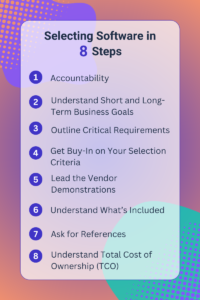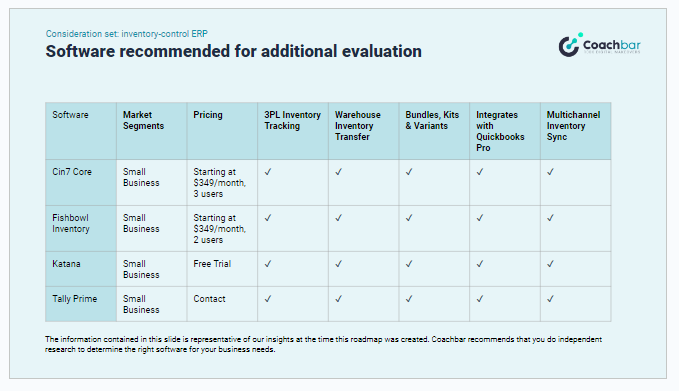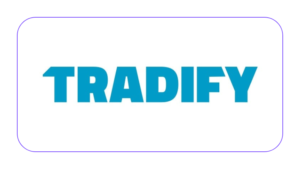The complex and endless range of software on the market today has made the software selection process more important than the implementation itself.
Choosing the market-leading software and skipping the selection process altogether is tempting, but that’s a risky strategy.
In this guide, you’ll learn the eight-step software selection process that significantly boosts implementation success rates for SMBs.
What is Software Selection?
Software selection is the in-depth process of choosing the right tech stack to meet your business’s long-term goals.
It’s easy to think that similar software options have the same functionality, but key differences can make one software option ideal and another useless.
As a business owner, it’s up to you to assess the different software options, compare features and functionality, and understand the key priorities of your technology roadmap.
Benefits of Using a Software Selection Process

Many business owners tend to opt for market-leading software and pour the majority of funds into implementation.
However, just because a software solution is market-leading doesn’t mean it’s the right fit for your business.
By slowing down and putting more emphasis on the software selection process, you experience some untapped benefits.
Gaining Clarity on Business Goals
You can’t choose a new software solution without deeply understanding your business goals. The software selection process will give you clarity on where your business is heading and allow you to realign your current strategies with your long-term plans.
Significantly Improve Business Processes
Sticking to the status quo doesn’t allow for innovation and growth. Considering different software options opens new possibilities for improvements, and may find entirely new systems that support your goals more effectively.
Minimize Implementation Risk
New software implementation carries hefty risks, from massive cost overruns and damaged relationships to underwhelming results and process failures.
Implementing a rigorous software selection process minimizes these implementation risks and helps prepare for unforeseen circumstances.
Why Software Selection Shouldn’t Be a Knee-Jerk Reaction to Problems
When bottlenecks, delays, and system errors become frequent, CRM software selection tends to be the knee-jerk response.
Stakeholders and managers usually have a strong preference for market-leading systems and want to dive into implementation to overcome current obstacles.
However, implementing new software without an in-depth selection process usually uncovers more problems than it solves. And because the software came with a hefty investment, stakeholders need team members to find workarounds to make it work as best they can.
By taking the time to understand the current problems and research the best solutions, businesses can select software that best suits their needs and plan a more strategic (and successful) implementation process.
8-Step Software Selection Process
We’ve worked with countless businesses to select and implement new software. Here is the eight-step software selection process that ensures a successful ROI.
1. Accountability
Choosing the best software is a business-led initiative, not just IT. Understand which managers, stakeholders, and team members need to be involved in the selection process and whose sign-off you’ll need throughout.
2. Understand Short and Long-Term Business Goals
Your software selection should address more than just current shortfalls. Understand your business’s long-term goals to make sound investments that will work now and in the future.
3. Outline Critical Requirements
Separate the “must haves” from the “nice to haves” to determine where to focus your budget. Unless you have an unlimited IT budget, you’ll need to focus your efforts on priorities first.
4. Get Buy-In on Your Selection Criteria
The total cost of ownership (TCO) combines all the costs involved in purchasing, operating, and maintaining new cloud-based technologies. It’s necessary to perform a cloud TCO analysis when considering moving to cloud technology to weigh the cost of cloud adoption against the running costs of your on-premise systems.
5. Lead the Vendor Demonstrations
Most vendor demos cover the same features, so they offer little insight. Talk to vendors and make your priorities clear so they can demonstrate the features of the software that matter most to you.
6. Understand What’s Included
Many vendors will offer “custom” builds or integrations that aren’t standard. However, they usually come with a hefty price tag. When creating a shortlist of potential software vendors, make sure you’re clear on all the features that are included.
7. Ask for References
Software vendors should have experience in your industry, so ask for references from companies that already use the system. Don’t take the references at face value – contact the business owner and ask for insights into the software and level of service.
8. Understand Total Cost of Ownership (TCO)
Build a five-year TCO model to easily compare vendors so you know exactly what you’re signing up for. This is especially useful when pricing models differ between potential vendors.
Software Selection Criteria Template
Software selection is much easier with a dedicated vendor scorecard (or software selection template). This gives you a simple system for scoring and ranking software options to see which one comes out on top.
Your business’s criteria will be unique, and you need buy-in from key decision-makers to ensure they align with business goals.
However, to give you an idea of how this works, here’s an ERP software selection criteria template we used with a client looking for a new inventory-controlled ERP:

Related: How to Successfully Implement ERPs
How a Consultant Can Help with Software Selection
The software selection process is critical for successful implementations, but it’s challenging to get right without professional help.
If you plan to update your tech stack, a software consultant can guide you through the software selection process.
They can assess your current systems, recommend upgrades, advise on the selection process, and support you throughout the implementation.
Ready to get started? Connect with a tech advisor today!
The next guide will show you how to find the right software consultant for ERP implementation.








